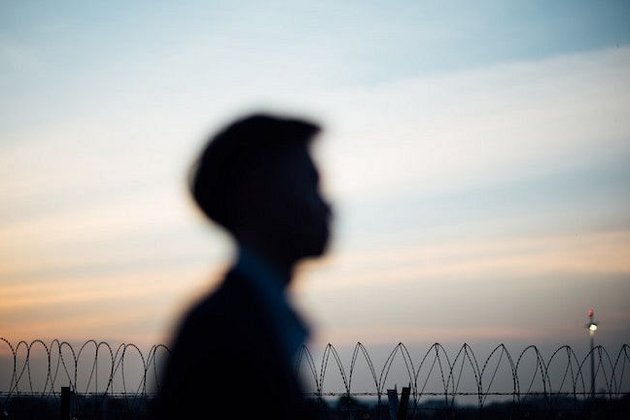Seven Chances
Sep 2, 2019
In Seven Chances, Buster Keaton plays Jimmy Shannon, a mild-mannered junior partner in a financial firm that is on the verge of collapse. Along with his partner, Billy Meekin (T. Roy Barnes), he tries to dodge a lawyer (Snitz Edwards) who they believe are trying to deliver a summons. Quite the opposite, as it turns out’”the poor, put-upon lawyer is trying to deliver good news to Shannon, namely that his grandfather has willed him $7 million. There is a catch, though, which is that Jimmy must get married before he can collect his inheritance. Oh, and there’s a catch to the catch, in that he must get married by 7:00 p.m. on his 27th birthday, which, of course, is that day. Thus, Jimmy has about half a day to get married and save himself and his firm from financial ruin.
Such is the set-up for Seven Chances, which, like Keaton’s next film Battling Butler (1926), was based on a popular Broadway play. The original play was penned by Roi Cooper Megrue and originally opened in 1916 to considerable success, although it quickly slipped into obscurity (one wonders if anyone would remember it at all if it weren’t for Keaton’s film adaptation). The set-up allows for all manner of awkward social comedy, as Jimmy, hardly a suave or debonair seducer, attempts to get various women to marry him. He genuinely wants to tie the knot with his sweetheart, Mary Jones (Ruth Dwyer), and he very nearly succeeds until she learns about the inheritance and the deadline and dumps him because she believes he just wants to marry her in order to collect. Billy and the lawyer try to help James convince someone’”anyone‘”to marry him, but all their efforts meet with failure, which is why Billy finally decides to take out an ad in the afternoon paper asking any woman who might be willing to marry Jimmy to show up at a church by 5:00 p.m. in their wedding attire, which results in literally hundreds of desperate women arriving in their veils and gowns, much to Jimmy’s surprise.
For most of its running time, Seven Chances is a fairly mediocre social comedy that relies heavily on awkward humor regarding Jimmy’s inability to get anyone to marry him. This involves a couple of somewhat queasy, politically incorrect gags, including one in which Jimmy thinks he has scored a wife only to discover that the girl is actually underage and is quickly hauled off by her angry mother. In another dated bit, Jimmy sidles up next to a woman he sees from behind, only to discover that she is African American and is therefore, in the world of 1920s American comedy, not a suitable wife (there is another unfortunate racist gag in which Jimmy is looking at a full-length mirror on a door, and when he looks away the door opens and a black man steps into its place, so that when Jimmy looks back, he sees the black man as his ‘œreflection,’ panics, and runs off).
However, despite the problems with the film’s earlier sequences, as a whole it is completely and utterly redeemed in the last 15 minutes, where Keaton stages a fantastically hilarious trajectory gag that stands with the motorcycle chase in Sherlock Jr. (1924) and the tornado sequence in Steamboat Bill Jr. (1928) as one of his finest feats of stunt-laden comedy. In this incredibly sustained act of physical comedy, Jimmy, in his wedding suit, finds himself running from what looks to be literally hundreds of women in wedding veils while trying to get to Mary’s house by the dreaded 7:00 deadline. This madcap chase takes him down city streets, through the middle of a football game (the players of which are trampled and have to be carted off on stretchers), a manufacturing yard, a bee farm, and a swamp. At various he points he hangs off the back of a racing car, swings precariously from a crane hook, and gets tangled in barbed wire. At one point he leaps from a cliff onto the top branches of an enormous tree that is being cut down at that very second, a stunt that would seem un-toppable until we see him a few seconds later flying down an enormous hill like a rag doll, our jaws dropping in disbelief that he didn’t break his neck.
That particular stunt unleashes what is the trajectory gag’s most famous bit, in which Jimmy runs for his life from an escalating avalanche of boulders (papier-mâché, of course, but still convincingly dangerous-looking, especially on the steep hill down which he is sprinting). Like all of Keaton’s best trajectory gags, this one is both hilarious and a testament to his impressive physicality; while the film has certainly been sped up to give his motion even more intensity, it is impossible not to make note of Keaton’s Olympic-like sprinting, not to mention diving, leaping, swimming, and swinging. It is one for the ages, even if the film as a whole doesn’t fully live up to his best work.
The Buster Keaton Collection Vol. 3: Seven Chances / Battling Butler Blu-ray
Aspect Ratio
1.33:1AudioDTS-HD Master Audio 2.0 surround (Seven Chances)
DTS-HD Master Audio 5.1 surround (Battling Butler)Subtitles
NoneSupplements’œBuster Keaton: Daredevil’ featurette
Restoration trailers for both filmsDistributor
Cohen Film CollectionRelease Date
August 20, 2019
COMMENTS
Like Cohen Media Group’s previous two Buster Keaton discs, this one features beautiful new restorations of both films that are part of ‘œThe Keaton Project,’ a joint effort to restore all of Keaton’s 1920s features by Cohen and Cineteca di Bologna. Seven Chances was restored from a first-generation positive nitrate print held by the Library of Congress, with one shot replaced by footage from a second-generation safety duplicate negative. The restoration maintains the nitrate print’s overall amber tint, while its two-strip Technicolor opening has been preserved from three different sources, including an internegative and an interpositive. Battling Butler was reconstructed from four elements: the original camera negative, two positive prints, and a second-generation duplicate negative. Like Seven Chances, it has also an amber tint consistent with its original presentation. Both films look wonderful, genuinely incredible at times, with great detail and clarity and an impressive lack of damage and wear. Both films also feature new orchestral scores by Robert Israel; the Seven Chances score is presented in DTS-HD two-channel stereo, while the Battling Butler score is presented in DTS-HD 5.1 surround. The only supplements are restoration trailers for both films and the short ‘œBuster Keaton: Daredevil’ featurette, in which film critic Leonard Maltin, director Quentin Tarantino, actor Bill Hader, and others comment on Keaton’s amazing stuntwork and physicality.
Copyright © 2019 James Kendrick
Thoughts? E-mail James Kendrick
All images copyright © Cohen Film Collection



